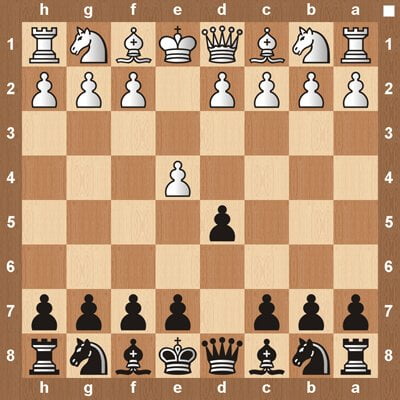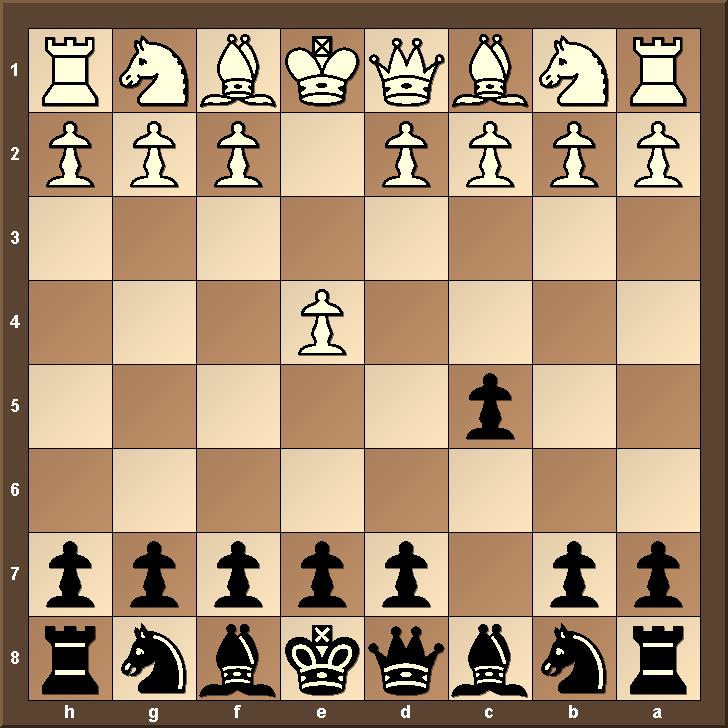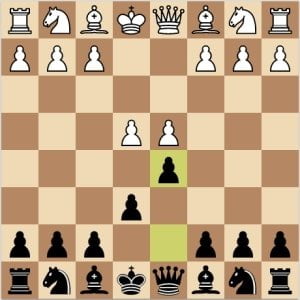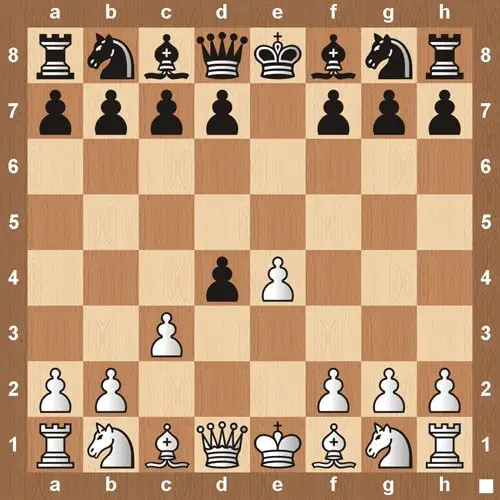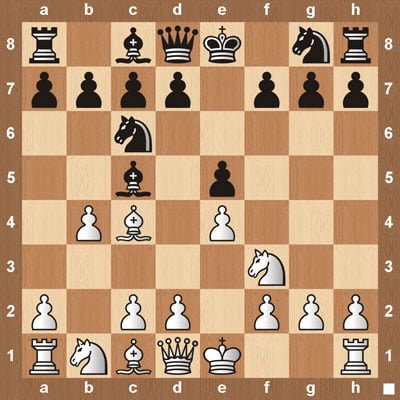Queen’s Gambit: A Timeless Strategy for Modern Chess Masters
In the realm of chess, the opening gambits are a grand dance. They’re the first whisperings of strategy, the primary steps in the unfolding drama on the 64 squares. Every chess player, novice or grandmaster, knows that the game’s outcome can hinge on these initial maneuvers. Among these, the Queen’s Gambit shines as one of the most revered and influential. It’s a classic opening, as timeless as the game itself, and its study can transform your understanding of chess from the ground up.
Why has the Queen’s Gambit remained so enduringly popular? Perhaps it’s because of its inherent versatility, its balance between risk and reward, or its capacity to lead to richly complex positions. Maybe it’s due to its illustrious history, having been the weapon of choice for countless champions of the past. Or could it be its recent surge in popularity due to the acclaimed Netflix miniseries bearing its name?
This guide aims to demystify the Queen’s Gambit, breaking it down move by move, strategy by strategy. Whether you’re a seasoned player looking to enrich your repertoire or a beginner intrigued by this ancient game, there’s something here for you. So adjust your pieces, reset your clocks, and prepare to dive into the captivating world of the Queen’s Gambit. Welcome to your next chess journey!
See also: What are the Basic Principles of Chess Openings?
Historical Perspective
Tracing the history of the Queen’s Gambit
The roots of the Queen’s Gambit reach far back into the annals of chess history. This elegant dance of strategy first came to prominence in the 15th century and has remained a central pillar of chess opening theory ever since.
In the early days of the Queen’s Gambit, players focused heavily on pawn structure and control of the center. This strategic emphasis, as we’ll explore in more depth later, is one of the core strengths of the Queen’s Gambit and a key reason for its enduring popularity.
Yet, despite its early inception, the Queen’s Gambit did not fully bloom until the 19th century. During this golden age of chess, known for the Romantic style of play, the Queen’s Gambit began to shine as a powerful counterpoint to the open games popular at the time. The history of chess is rich with evolution, and the Queen’s Gambit is no exception.
Notable games and players who utilized this opening
The Queen’s Gambit has been a favorite among countless chess champions, solidifying its place as a go-to opening for aspiring players.
- Paul Morphy (1837–1884): An American chess prodigy, Morphy revolutionized the game with his innovative approach. While the Queen’s Gambit wasn’t his signature opening, he did use it to tremendous effect in several famous games.
- Emanuel Lasker (1868–1941): The second World Chess Champion, Lasker held the title for a staggering 27 years. He frequently used the Queen’s Gambit to devastating effect, leaving a lasting impact on the way the opening is played.
- Anatoly Karpov (1951–present): This 12th World Champion’s style was marked by positional brilliance, making the Queen’s Gambit an ideal choice for his repertoire. His deep understanding of the opening allowed him to produce some truly masterful games.
- Garry Kasparov (1963–present): Arguably one of the greatest players in the history of chess, Kasparov was known for his aggressive play and deep strategic understanding. His use of the Queen’s Gambit furthered the theory of the opening and led to numerous memorable games.
- Viswanathan Anand (1969–present): The first Indian Grandmaster and a former World Champion, Anand’s use of the Queen’s Gambit helped shape its modern interpretation. His games showcase the flexibility and dynamic potential of the opening.
The Queen’s Gambit has seen a revival in popularity, thanks to the Netflix miniseries “The Queen’s Gambit.” While the series is fictional, the depiction of the opening and the games played are all too real, showcasing the elegance and depth of the Queen’s Gambit.
The Queen’s Gambit has stood the test of time, serving as a shining example of strategic depth and positional play. By following in the footsteps of these great players and studying their games, you can enhance your understanding of the game and potentially see an improvement in your own chess performance. For a more in-depth look at these remarkable players, head over to our list of the best chess players in the world.
Understanding the Basics
Explanation of the Opening Moves
The Queen’s Gambit begins with 1.d4 d5 2.c4. It’s called a “gambit” because white appears to offer a pawn (on c4) for free. But the move 2.c4 is a calculated risk, a bait that comes with a hook.
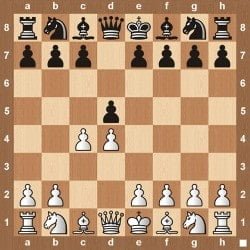
While black could accept the gambit with 2…dxc4, in doing so, black surrendered the center, allowing white to gain a lead in development and control of the board. If black declines the gambit by playing 2…e6 or 2…c6, white continues building a strong center and prepares for piece development.
Remember, the importance of the opening principles cannot be overstated. The Queen’s Gambit adheres to these principles exceptionally well.
Diagrams Illustrating the Initial Positions
Let’s illustrate the initial moves of the Queen’s Gambit.
Initial Position of the Queen’s Gambit
| 8 | r | n | b | q | k | b | n | r |
|---|---|---|---|---|---|---|---|---|
| 7 | p | p | p | p | . | p | p | p |
| 6 | . | . | . | . | . | . | . | . |
| 5 | . | . | . | . | . | . | . | . |
| 4 | . | . | P | P | . | . | . | . |
| 3 | . | . | . | . | . | . | . | . |
| 2 | P | P | . | . | P | P | P | P |
| 1 | R | N | B | Q | K | B | N | R |
| a | b | c | d | e | f | g | h |
If Black Accepts the Gambit
| 8 | r | n | b | q | k | b | n | r |
|---|---|---|---|---|---|---|---|---|
| 7 | p | p | p | p | . | p | p | p |
| 6 | . | . | . | . | . | . | . | . |
| 5 | . | . | . | . | . | . | . | . |
| 4 | . | . | P | . | . | . | . | . |
| 3 | . | . | . | . | . | . | . | . |
| 2 | P | P | . | P | P | P | P | P |
| 1 | R | N | B | Q | K | B | N | R |
| a | b | c | d | e | f | g | h |
If Black Declines the Gambit
| 8 | r | n | b | q | k | b | n | r |
|---|---|---|---|---|---|---|---|---|
| 7 | p | p | . | p | p | p | p | p |
| 6 | . | . | p | . | . | . | . | . |
| 5 | . | . | . | . | . | . | . | . |
| 4 | . | . | P | P | . | . | . | . |
| 3 | . | . | . | . | . | . | . | . |
| 2 | P | P | . | . | P | P | P | P |
| 1 | R | N | B | Q | K | B | N | R |
| a | b | c | d | e | f | g | h |
The Queen’s Gambit is a fascinating blend of strategy and tactics, where strategic planning and tactical maneuvers intermingle. Becoming proficient in this opening is a fulfilling journey, enriched with deep strategic nuances and thrilling tactical possibilities.
Variations of the Queen’s Gambit
Queen’s Gambit Accepted
The Queen’s Gambit Accepted (QGA) is a daring yet flexible response where black captures the pawn on c4 with its d5 pawn. In essence, black chooses to go against conventional wisdom that cautions against prematurely moving central pawns.
While it might seem that black is gaining a pawn, it’s not quite that simple. In the wake of the capture, white seizes the opportunity to establish a dominant center with e3 and later recaptures the pawn on c4.
Take a look at the position:
| 8 | r | n | b | q | k | b | n | r |
|---|---|---|---|---|---|---|---|---|
| 7 | p | p | p | . | p | p | p | p |
| 6 | . | . | . | . | . | . | . | . |
| 5 | . | . | . | . | . | . | . | . |
| 4 | . | . | . | . | . | . | . | . |
| 3 | . | . | . | . | P | . | . | . |
| 2 | P | P | . | P | . | P | P | P |
| 1 | R | N | B | Q | K | B | N | R |
| a | b | c | d | e | f | g | h |
Queen’s Gambit Declined
The Queen’s Gambit Declined (QGD) is perhaps the most traditional response to the Queen’s Gambit. With 2…e6, black solidifies the center and prepares to develop its knight to f6 and bishop to e7 or d6, aiming for a harmonious development.
Here is the QGD position after 1.d4 d5 2.c4 e6:
| 8 | r | n | b | q | k | b | n | r |
|---|---|---|---|---|---|---|---|---|
| 7 | p | p | . | p | p | p | p | p |
| 6 | . | . | . | . | . | . | . | . |
| 5 | . | . | . | p | . | . | . | . |
| 4 | . | . | . | P | . | . | . | . |
| 3 | . | . | . | . | . | . | . | . |
| 2 | P | P | . | . | P | P | P | P |
| 1 | R | N | B | Q | K | B | N | R |
| a | b | c | d | e | f | g | h |
Slav Defense
The Slav Defense is a robust response to the Queen’s Gambit. By playing 2…c6, black aims to maintain its hold over the d5 square. The Slav Defense is popular at all levels, and it’s well-known for its solidity and resilience.
Here is the Slav Defense position after 1.d4 d5 2.c4 c6:
| 8 | r | n | b | q | k | b | n | r |
|---|---|---|---|---|---|---|---|---|
| 7 | p | . | p | p | . | p | p | p |
| 6 | . | . | . | . | . | . | . | . |
| 5 | . | . | . | p | . | . | . | . |
| 4 | . | . | . | P | . | . | . | . |
| 3 | . | . | . | . | . | . | . | . |
| 2 | P | P | . | . | P | P | P | P |
| 1 | R | N | B | Q | K | B | N | R |
| a | b | c | d | e | f | g | h |
Semi-Slav Defense
The Semi-Slav Defense occurs when black combines the ideas of the Queen’s Gambit Declined and the Slav Defense by playing both …e6 and …c6. This makes for a complex, rich middlegame filled with intricate strategies and captivating tactics.
Here is the Semi-Slav position after 1.d4 d5 2.c4 e6 3.Nc3 c6:
| 8 | r | n | b | q | k | b | n | r |
|---|---|---|---|---|---|---|---|---|
| 7 | p | . | p | p | . | p | p | p |
| 6 | . | . | . | . | p | . | . | . |
| 5 | . | . | . | p | . | . | . | . |
| 4 | . | . | . | P | . | . | . | . |
| 3 | . | . | N | . | . | . | . | . |
| 2 | P | P | . | . | P | P | P | P |
| 1 | R | . | B | Q | K | B | N | R |
| a | b | c | d | e | f | g | h |
Albin Counter-Gambit
The Albin Counter-Gambit is an adventurous option for black. After 1.d4 d5 2.c4, black strikes back with 2…e5, challenging white to accept the gambit pawn. This opening leads to aggressive, sharp positions that often require precise calculation.
Here is the Albin Counter-Gambit position after 1.d4 d5 2.c4 e5:
| 8 | r | n | b | q | k | b | n | r |
|---|---|---|---|---|---|---|---|---|
| 7 | p | p | p | . | p | p | p | p |
| 6 | . | . | . | . | . | . | . | . |
| 5 | . | . | . | p | p | . | . | . |
| 4 | . | . | . | P | . | . | . | . |
| 3 | . | . | . | . | . | . | . | . |
| 2 | P | P | . | . | P | P | P | P |
| 1 | R | N | B | Q | K | B | N | R |
| a | b | c | d | e |
Strategy and Tactics
Basic Principles and Objectives When Playing the Queen’s Gambit
When deploying the Queen’s Gambit, you’re inviting an enthralling duel of strategic depth. Here are some of the basic principles and objectives to bear in mind:
- Control the Center: As with many openings in chess, the Queen’s Gambit aims to control the central squares (d4, d5, e4, e5). The d4 and c4 pawns collaborate to exert pressure on the d5 square, contesting black’s central control.
- Swift Development: White should aim to develop their pieces rapidly. This means bringing out knights and bishops early, aiming to castle, and connecting rooks.
- Pawn Structure: Understanding pawn structures is key in the Queen’s Gambit. White’s pawns can often create a ‘pawn majority’ in the center, which can become a critical advantage in the endgame.
- Piece Activity: Aim to maximize the activity of your pieces. In particular, the Queen’s Bishop (the c1-bishop for white) often becomes a powerhouse piece on the long diagonal (a1-h8 for white).
Common Traps and Pitfalls to Avoid
While the Queen’s Gambit is a highly strategic opening, there are certain common traps and pitfalls to avoid:
- Avoid Greed: If you’re playing black, don’t get too comfortable with the c4 pawn. White often allows black to take this pawn to later develop a strong center and launch a powerful attack.
- Overextension: While it’s important to control the center, be careful not to overextend. Over-pushing your pawns can leave them vulnerable to attack and weaken your control over key squares.
- Neglecting Development: It’s crucial to prioritize piece development over material gains in the opening. Ignoring development to win a pawn or two can leave your king in the center and vulnerable to a swift attack.
Exploring Key Strategic Ideas and Tactical Themes
In the Queen’s Gambit, understanding key strategic ideas and tactical themes can transform your game. Here are a few:
- Pawn Breaks: In the Queen’s Gambit, pawn breaks are a key strategic theme. If black accepts the gambit, white can use the e4 break to challenge black’s setup.
- Isolated Queen’s Pawn (IQP) Positions: In many variations of the Queen’s Gambit, black ends up with an isolated d5-pawn after exchanges in the center. These are known as Isolated Queen’s Pawn positions, and they come with unique tactical motifs, such as utilizing the d4 square for piece activity.
- Minority Attack: In certain variations, especially in the Queen’s Gambit Declined, white may deploy a minority attack on the queenside. The aim is to create pawn weaknesses in black’s camp that can be targeted in the endgame.
Remember, the beauty of the Queen’s Gambit lies in the harmonious combination of strategy and tactics. Understanding these themes and avoiding pitfalls can significantly elevate your performance. In your chess journey, remember to revisit our section on initial moves to refresh your knowledge. As the ancient proverb goes, repetition is the mother of learning. And what is chess if not a constant dance of learning and strategy?
In-Depth Analysis
Detailed Walkthrough of Model Games Using the Queen’s Gambit
The Queen’s Gambit is a favorite of many chess grandmasters, and it has been deployed in numerous pivotal games in the history of chess. Let’s examine one such game: Garry Kasparov vs. Veselin Topalov, Wijk aan Zee, 1999.
Note: For a detailed explanation on the standard chess notation used to describe chess moves, you can refer to this guide.
Here is the move-by-move breakdown of the game’s opening:
- d4 d5
- c4 c6
- Nf3 Nf6
- Nc3 dxc4
At this point, we can see that the opening has transitioned into the Slav Defense variation of the Queen’s Gambit. The game proceeded with Kasparov making a series of brilliant strategic and tactical decisions, eventually leading him to victory. The game is a testament to the dynamism and power of the Queen’s Gambit when played by a chess maestro.
Examination of Key Decisions and Alternatives
In the above game, we can examine key decisions and potential alternatives. Let’s focus on the key decision made at the 4th move:
4… dxc4. Topalov, playing as black, decided to capture the pawn on c4, effectively accepting the gambit. This is a critical point in the game as there are other viable alternatives.
- 4… e6, leading to the Semi-Slav Defense. This move offers black a solid but somewhat passive position. Black aims to recapture the pawn on c4 with the bishop after …b5 and …a6 are played.
- 4… Bf5, leading to the Chameleon variation of the Slav Defense. This move develops the bishop to an active square and prepares e6, which will add support to the pawn on d5.
- 4… g6, aiming for a Fianchetto setup. This is a less common approach, but it can lead to rich, double-edged positions.
Each of these decisions results in a significantly different position and guides the strategic and tactical themes of the game. The Queen’s Gambit, as seen in the game between Kasparov and Topalov, provides a fertile ground for intricate strategies and breathtaking tactical skirmishes.
See also: What is the Danish Gambit in Chess?
Preparing for the Queen’s Gambit as Black
When you are sitting on the black side of the board and your opponent leads with the Queen’s Gambit, it’s important to have a sound strategy and be ready with the best responses. Your preparation can determine the nature of the game – whether you’ll end up in an aggressive tactical battle or subtle positional maneuvering. The nature of the Queen’s Gambit means there is no one-size-fits-all response, but rather a series of strategic considerations you need to make.
Best Responses and Strategies When Facing the Queen’s Gambit
- Queen’s Gambit Accepted (1.d4 d5 2.c4 dxc4): The most straightforward response to the Queen’s Gambit is simply to accept it. This move captures the pawn on c4, effectively saying to white, “I accept your gambit.” By accepting, black can hope to use the extra pawn to establish a solid defense and possibly launch a counterattack later in the game. But, beware of white’s intentions of seizing the center quickly. Preparation is key, and the history of chess can serve as your guide.
- Queen’s Gambit Declined (1.d4 d5 2.c4 e6): The Queen’s Gambit Declined is a popular and robust response. By playing e6, black shores up the center and prepares to develop the bishop on c8. The Queen’s Gambit Declined leads to complex and rich positions that require strategic thinking and understanding of positional chess.
- Slav Defense (1.d4 d5 2.c4 c6): The Slav Defense is a solid and reliable option for black. It aims to maintain the pawn on d5, offering black a solid structure to develop their pieces. For a deeper understanding of the principles that make this defense so resilient, check out this article on chess opening principles.
- Albin Counter Gambit (1.d4 d5 2.c4 e5): The Albin Counter Gambit is a daring and aggressive option. It can lead to open, imbalanced positions that favor the player with superior tactical awareness and preparation.
Remember, the key to successfully responding to the Queen’s Gambit, or any other opening, is understanding the positions and patterns that can arise from your chosen response. Check out the advantage in chess to get a better sense of how to capitalize on your opening decisions.
Modern Use of the Queen’s Gambit
The Queen’s Gambit, as we have explored throughout this article, is a rich, complex, and highly tactical opening with a storied history. But how does it hold up in modern, high-level chess? Does it still retain the same popularity among contemporary grandmasters? In fact, its resurgence and current usage is a fascinating narrative unto itself.
Discussion on the Opening’s Popularity and Usage in Contemporary High-Level Play
In recent years, the Queen’s Gambit has made a noteworthy resurgence in popularity, in part due to the critically acclaimed Netflix series “The Queen’s Gambit,” but also due to its strategic depth and unique promise of an engaging battle of minds. The modern chess scene, including both classical and online play, has seen this opening come to the forefront, standing the test of time against various opening trends.
The Queen’s Gambit offers several attributes that make it a favorite among top players:
- Richness of strategic ideas: The Queen’s Gambit is not just a single sequence of moves, but a broad array of possibilities that allows for complex strategic maneuvers. Grandmasters often enjoy the scope for originality and creativity it offers.
- Solid foundation: As an opening, it provides a robust and reliable foundation for the middlegame. The pawn structure achieved is often secure and conducive to piece development, which aligns with the core principles of chess openings.
- Flexibility: The Queen’s Gambit can cater to a player’s style and mood. It can lead to tactical battles, quiet positional play, or anything in between. This flexibility makes it a versatile tool in any chess player’s repertoire.
Contemporary grandmasters who often employ the Queen’s Gambit include the likes of Magnus Carlsen and Vishwanathan Anand. They have shown the potency of this opening at the highest level of play. This reflects in the list of the best chess players in the world, where those adept at using the Queen’s Gambit have a notable presence.
To understand the depth of thinking these players employ, you might want to read about how chess players think and the role of chess psychology in their game.
How to Practice the Queen’s Gambit
Having journeyed through the historical lanes, key strategies, and modern implications of the Queen’s Gambit, you might be itching to try out the opening yourself. And why wouldn’t you? The intrigue of the gambit, the rich variation pool, and the stamp of approval from grandmasters alike make it an appealing prospect. So, how do you go about mastering it?
Training Methods and Resources for Mastering this Opening
1. Chess Books
One of the traditional ways to learn a chess opening is through comprehensive chess books. Books provide detailed analysis and can offer insights into the strategic and tactical nuances of the Queen’s Gambit. A classic recommendation is ‘The Queen’s Gambit for the Attacking Player’ by Lev Alburt and Roman Dzindzichashvili, which promises a potent blend of theory and practical guidance.
2. Online Chess Platforms
Online platforms are an excellent resource for learning and practicing the Queen’s Gambit. Websites like Chess.com and Lichess offer interactive lessons, databases of master games, and the ability to play games against both humans and computer opponents. You can set the opening to the Queen’s Gambit to get targeted practice. As you play, keep in mind the basic chess opening principles to build a solid foundation.
3. Chess Engine Analysis
Utilize chess engines such as Stockfish or Komodo to analyze your games. These tools can point out the flaws in your play, offer alternate move suggestions, and give an overall evaluation of the position. This feedback is essential to improve your understanding of the Queen’s Gambit.
4. Video Lessons and Lectures
Numerous video lectures by grandmasters and international masters are available online. They explain key concepts of the Queen’s Gambit, demonstrate model games, and break down strategic ideas. This form of visual learning can be particularly effective, and sites like YouTube are a treasure trove for such content.
5. Hire a Chess Coach
If you’re serious about mastering the Queen’s Gambit, consider hiring a chess coach. A coach can provide tailored guidance, highlight your weaknesses, and accelerate your learning process. Additionally, they can guide you on other aspects like chess psychology, which can give you an edge over your opponents.
6. Practice and Review
Lastly, but most importantly, practice the opening in your games and review your performance. Make note of the mistakes you make and the positions you struggle with. Remember, improving your chess game is a continuous process and there is no substitute for practice and self-review.
The path to mastering the Queen’s Gambit, like any chess opening, requires time, dedication, and practice. With these resources and training methods, you are now equipped to embark on your own journey into the world of the Queen’s Gambit.
See also: The Sicilian Defense – Chess Opening
Conclusion
Stepping into the universe of chess with its infinity of board states and rich strategic depth can be an overwhelming task. Yet, learning the right openings is akin to unlocking the gateway to this mystic land. And among these portals, the Queen’s Gambit holds a special place, a hallowed ground if you will, revered by novices and grandmasters alike.
The importance of the Queen’s Gambit in developing your chess game cannot be overstated. It presents a balanced cocktail of strategy and tactics that nourishes a player’s development, paving the way for a robust understanding of positional play. The opening harmoniously aligns with fundamental chess principles, favoring rapid piece development, pawn structure control, and king safety. Yet, it also throws in a dash of adventurous risk with its gambit offering, introducing players to the vibrant world of tactical skirmishes.
The Queen’s Gambit is not a promise of immediate victory; chess, after all, is an art that transcends simplistic formulas for success. Rather, it’s a sturdy vessel, steering players through the treacherous sea of chess complexities. In your journey, you’ll encounter strategic ideas like the power of pawn chains, the beauty of piece coordination, and the duality of space and time in chess.
More than just an opening, the Queen’s Gambit is a mentor, subtly guiding you towards the beautiful depths of the game. By practicing this opening, you allow yourself to engage in strategic battles and tactical wars. You provide yourself with an opportunity to uncover secrets hidden within the 64 squares of the chessboard.
In the end, mastery of the Queen’s Gambit or any opening in chess requires time, practice, and most importantly, an unwavering love for the game. Dive in with the understanding that each defeat is a lesson, each victory is a confirmation of progress, and every game is a step towards becoming a more accomplished player.
We hope this comprehensive guide assists you in your chess journey. Always remember, it’s not just about the destination, but also about the journey. The Queen’s Gambit is just one path, but it’s a path that has inspired many a tale of chess prowess. Who knows? The next tale could very well be yours!
See also: What is the Scandinavian Defense in Chess?
Resources
Diving into the fascinating depths of the Queen’s Gambit, you may find yourself yearning for more knowledge and insight. Here are some highly recommended resources that can further nurture your understanding and passion for this remarkable opening:
- Books: ‘Queen’s Gambit Declined’ by Matthew Sadler and ‘The Queen’s Gambit & Catalan for Black’ by Lasha Janjgava provide deep insights into the subtleties of this opening. These books cover a wide range of variations, providing both conceptual understanding and concrete lines to practice.
- Online Chess Platforms: Websites like Chess.com, Lichess.org, and the Internet Chess Club offer a plethora of resources for learning and practicing the Queen’s Gambit. They have vast databases of games, training tools, and the opportunity to play against opponents worldwide.
- Video Courses: Websites like ChessBase and iChess.net offer comprehensive video courses on the Queen’s Gambit taught by expert players and trainers. These videos can be particularly helpful as they explain the ideas behind each move visually and conceptually.
- Chess Engines: Tools like Stockfish and Leela Chess Zero can help you analyze your games, allowing you to understand where you might have gone wrong or right in your Queen’s Gambit games.
- Master Games: Studying games played by grandmasters can be highly informative. You can explore famous databases such as chess.com’s Master Games or 365chess.com to find countless games involving the Queen’s Gambit. Watch how masters handle different situations and learn from their strategies.
- Personal Chess Trainer: If feasible, a personal chess trainer can provide you with tailored guidance, identifying your strengths and weaknesses, and helping you focus on the right areas to improve your Queen’s Gambit game.
The journey through the labyrinth of chess is unique to each player, and it’s essential to find resources that resonate with your personal learning style. Remember, persistence is key in the world of chess. So, keep exploring, keep learning, and most importantly, keep enjoying the game!
See also: The Evans Gambit – Chess Opening
FAQ
1. Q: Why is the Queen’s Gambit so popular?
A: The Queen’s Gambit is popular due to its sound structure, flexibility and rich development possibilities. It has been used by many grandmasters, adding to its prestige and reputation.
2. Q: What are the key variations of the Queen’s Gambit?
A: The key variations of the Queen’s Gambit include the Queen’s Gambit Accepted, Queen’s Gambit Declined, Slav Defense, Semi-Slav Defense, and the Albin Counter-Gambit.
3. Q: What should Black do against the Queen’s Gambit?
A: Black has several solid responses to the Queen’s Gambit. These include accepting the gambit, declining it, or opting for the Slav Defense or Semi-Slav Defense. The choice depends on Black’s playstyle and understanding of the game.
4. Q: What are the strategic principles in the Queen’s Gambit?
A: Strategic principles in the Queen’s Gambit involve control of the center, piece development, and pawn structure considerations. It is also crucial to anticipate potential traps and pitfalls that may arise in the game.
5. Q: How can I practice the Queen’s Gambit?
A: Practicing the Queen’s Gambit can involve studying classic games, exploring different variations, and playing the opening in practice games. There are also many books and online resources available to deepen understanding.
See also: What is the French Defense in Chess?

